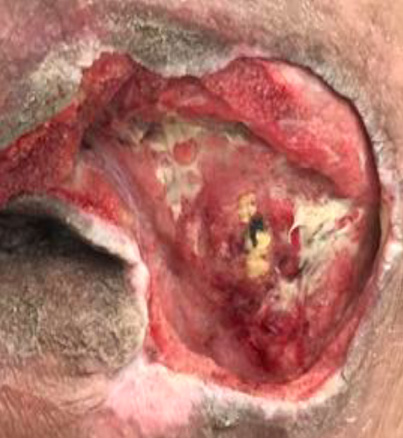What is a Stage IV Pressure Injury?
When unrelieved pressure causes damage to the skin and underlying structures, an ulceration can develop, known as a pressure injury. There are many factors that can contribute to the development of a pressure injury such as friction, shear, moisture, pressure, limited mobility, obesity, or other comorbidities. Stage IV is a full-thickness skin and tissue loss with exposed dermis, adipose (fat) tissue, and various underlying structures.
How do you identify it?
Pressure injuries tend to occur over bony prominences on the body such as the shoulders, elbows, hips, sacrum, buttocks, ankles, heels and toes. In Stage IV pressure injuries, granulation tissue, slough, and/or eschar are present just as in Stage III injuries. However, now fascia, muscle, tendon, ligament, cartilage, and/or bone are exposed. These exposed deeper structures are what differentiate a Stage III from a Stage IV pressure injury.
How do you treat it?
The main goal in treating a Stage IV injury is to relieve pressure and promote healing in the wound bed. All of the pressure relieving techniques (Such as positioning and managing moisture) utilized in treating a Stage | and II applies as well as the use of a special air mattress and/or foley catheter as mentioned in the treatment of Stage III. As with Stage III, slough can be treated enzymatically with an enzymatic debridement agent or with surgically debridement. Moderate to heavy exudate can managed with an alginate dressing. Be sure to monitor for signs and symptoms of infection and treat appropriately.
i 222 N. Pacific Coast Hwy. Suite2175 = Materials Sourced from: El Segundo, CA 90245 Marriott, R., Gedalia, U., Dhillon, G., Sandoz, C., & Advantage _ 1e877878.3289 Frazier, T. (2015). Wound Care Essentials. ASWC. SURGICAL & WOUND CARE info@advantagewoundcare.org Wound Educators. (n.d.).
 Upcoming Courses Learn More & Register Here
Upcoming Courses Learn More & Register Here
